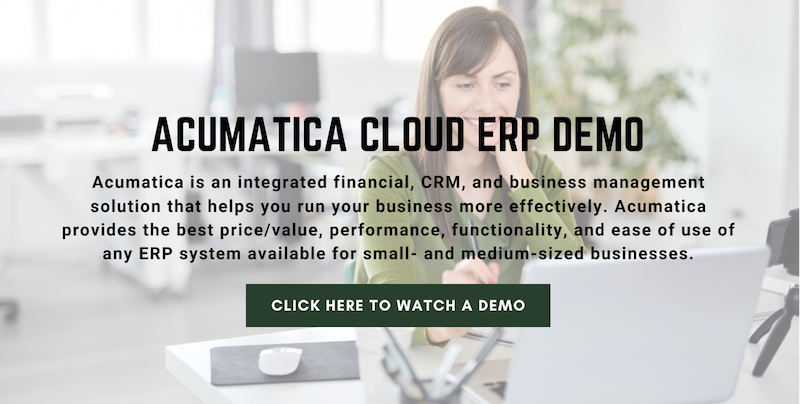You’ve made the decision to move to Enterprise Resource Planning (ERP) software. Perhaps your business reached a point where it was smart to convert your company’s old accounting software, which was supporting multiple systems, to ERP. ERP has more advanced capabilities. It extends to multiple modules that run the entire business. Now, it’s time to implement.
Assembling an implementation team is the first step. It’s important to think through how ERP will be used in the business. Use cases will surely evolve as time goes on. The best practice is to deploy initially with a relatively limited scope of functionality. Each department of the business should have the chance to comment on how they envision using ERP or interacting with the system once it’s working. The process needs to examine how the company operates, its current business processes, risk management practices and gaps in the current system.
The ERP software provider will be working with team leaders from necessary departments. The implementation process will involve planning sessions, pre-deployment meetings and training. The team will drill down and decide upon the “Big 4,” differentiating between the essentials, the desirable, things that are not an immediate need and “nice to have” features. Essentials come first, of course, especially for the initial implementation. The desirable features and non-immediate needs should be included in the incremental deployment plan. Nice to have features, are, well, nice to have if you can have them.
Functionality, budget, timeline guide the team in determining how to proceed based on an aggregate list of requirements compiled by those who will use the software 24/7. At the end of the requirements gathering process there will be a list of features and functions the team expects to have realized by project completion day. We recommend a requirements checklist to help the process along. The following are some of the items it covers:
- Training requirements for administrative and user needs—ensuring that everyone who will use or manage the ERP system will know what they need to know to do their jobs.
- System and data management requirements—comprising a clear set of policies and procedures to keep the system running smoothly.
- Multiple accounting functionality requirements—covering company-specific needs, such as tax parameters, multi-entity accounting, payables approval workflows and so forth.
- Reporting requirements—dealing with the reports that each stakeholder needs from the ERP system to manage the business optimally.
- Dashboard customization—understanding the data visualizations that stakeholders, such as senior managers, will need to perform in their roles.
- Compliance—defining policies, procedures and workflows that ensure compliance with regulations, such as the California Consumer Privacy Act (CCPA).
- Functionality gaps—identifying gaps between what the system can do at launch versus what it needs to do as subsequent upgrades occur.
- Industry specific requirements and details—realizing industry functionality, which may require use of a dedicated industry module, such as Acumatica Manufacturing Edition.
- Mobility and scalability—planning for, and then operationalizing, mobile ERP use cases.
- User roles—defining who is allowed to see and do what, to enforce financial controls and keep sensitive data private while enabling users to be productive.
This may seem like a lot. It is, except it’s worth the effort. We’ve helped many companies through the ERP requirements gathering and implementation planning process. This checklist is a great place to start thinking in concrete terms about what ERP will look like at your company. To learn more about how the process works, contact us for what promises to be an informative conversation.
Learn More About Acumatica Cloud ERP
With the industry’s most adaptable and future-proof platform, best in class product functionalist business practices, Acumatica is the leading business management solution for mid-market companies like yours. Watch an Acumatica demo to learn more.
Additional ERP Implementation Resources
How Your Business Struggles Without Modern ERP
ERP Selection and Implementation Strategy: 5 Steps for Success


